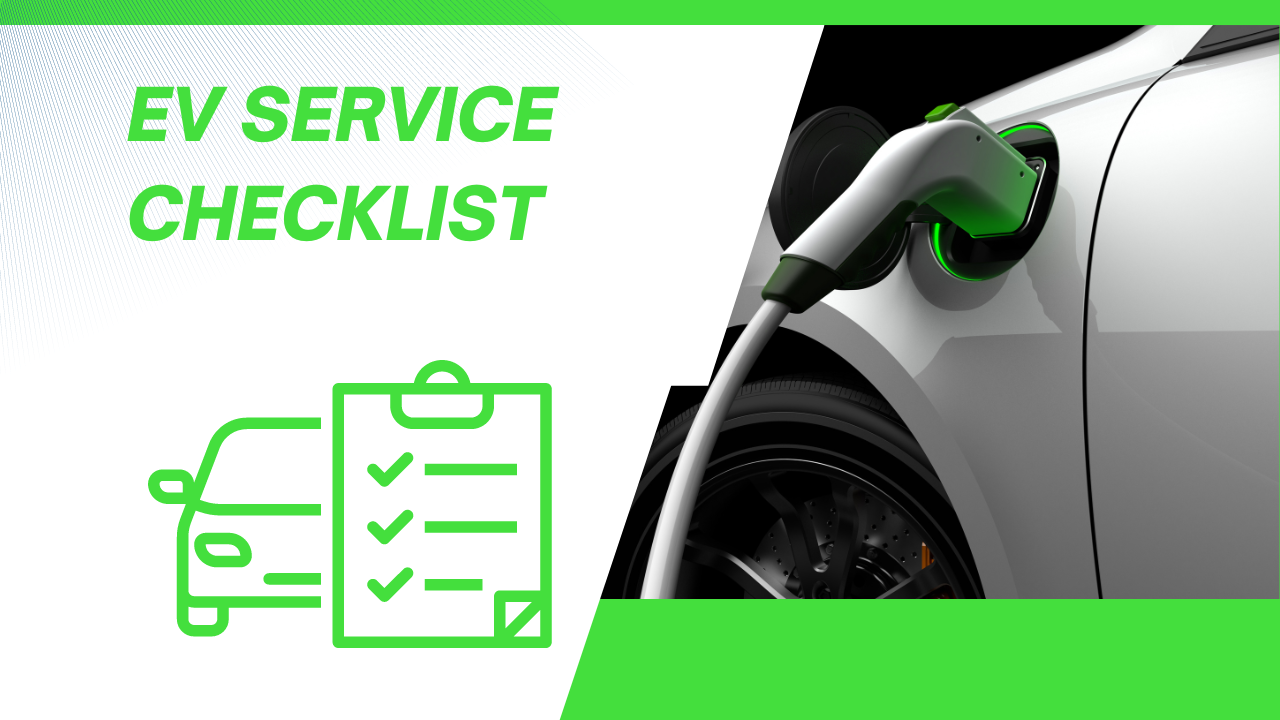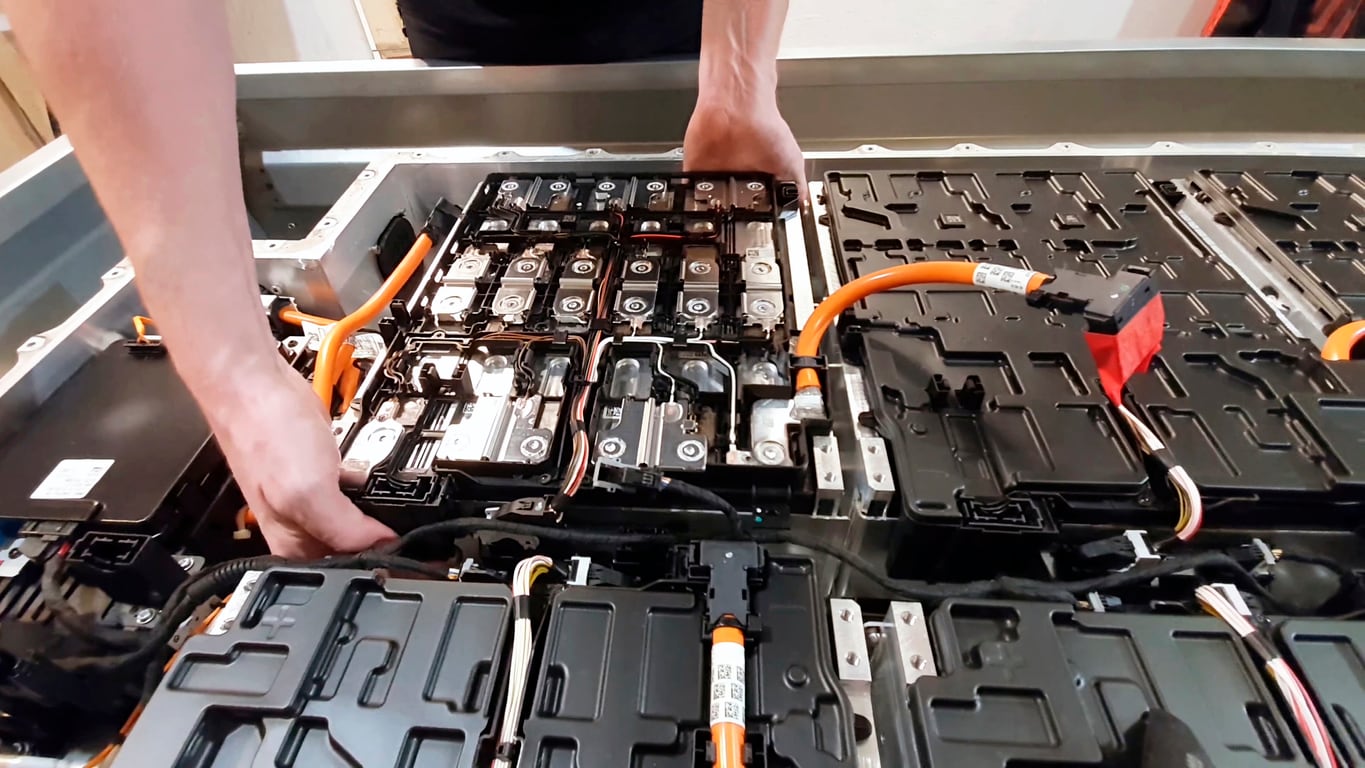Alright you lucky EV owners, let’s talk maintenance, or the lack thereof. Let’s debunk some myths and lay out facts. No, you won’t need weekly battery swaps, but yes, you’ll have to babysit your beloved car’s computer now and then. Look, every modern marvel comes with a user manual. But don’t worry, this one is straightforward, (with only a few sub-clauses about robot risings and asteroid strikes). Ready to hit the owner enlightenment highway? Let’s roll.
Understanding EV Maintenance

Contrary to popular belief, maintaining an electric vehicle (EV) isn’t as complicated as some may think. In fact, many of the traditional automotive upkeep tasks simply don’t apply to EVs, thanks to their minimalistic mechanical design. Keep in mind; electric vehicles don’t have internal combustion engines, so there’s a lot less to worry about.
For starters, EVs completely eschew those messy oil changes. There’s no engine oil to replace or filters to worry about. Ditto for things like spark plugs, timing belts, or head gaskets. You won’t be finding those components on an EV, which ultimately means less wear and tear and fewer parts to replace.
But just because your futuristic ride doesn’t follow conventional maintenance norms, doesn’t mean it’s entirely maintenance-free. EVs may have different components that require attention, but routine upkeep is still a crucial aspect of owning one.
Powertrain maintenance is centered around the vehicle’s electric motor. Luckily, these motors are notoriously hardy and operate with just a single moving part – the rotor. Therefore, the chances of anything going awry are significantly lower than with a traditional combustion engine. Still, it is prudent to have the motor and electrical connections inspected periodically to ensure everything is running smoothly.
Next comes the critical task of maintaining an EV’s battery pack. Just like your smartphone, over time the battery in your EV can degrade and lose capacity if not cared for properly. Factors such as overcharging, regularly topping off, extreme temperatures can contribute to the decline of your battery’s health. To avoid early battery deteriotion, it is advised to follow charging protocols mentioned in the owner’s manual and use fast-charging sparingly.
Brake maintenance is another area where EVs differ from their internal combustion counterparts. Many EVs employ regenerative braking systems, which use the electric motor to assist in slowing the vehicle, thus recapturing energy and improving battery life. This system reduces wear on the physical brakes, extending their lifespan. However, regular checks are necessary to ensure the system’s optimal performance.
The tires and the cooling system are two universal maintenance points for both EVs and traditional vehicles. Tires should be rotated and balanced regularly, and air pressure should be checked often. The cooling system, which helps keep the battery pack within its optimal temperature range, needs routine checks to ensure its effectiveness.
In a nutshell, approach to EV maintenance veers a bit off the path of convention, spinning a new narrative of automotive upkeep. However, it’s critical to be aware of these regular checks – they ensure your EV stays efficient, reliable and has a longer overall lifespan. Ignore them at your own peril – an electric vehicle might be more technologically advanced, but it’s not immune to neglect.
Routine Maintenance Checklist for EV Owners

Owning an electric vehicle (EV) is not like owning a conventional gas-powered car. The upkeep is much simpler, and your routine maintenance will be a lot more streamlined. Yes, range anxiety might be a thing, but the upside? Your hands won’t look like an oil slick after a day of under-the-hood tinkering.
Titanic oil changes are not a concern with EVs. Unlike their fossil-fueled counterparts, EVs don’t lubricate their engines with oil but have coolant systems. Therefore, regular coolant system checks should be part of your routine. The cooling system is essential in an EV, as it ensures that the battery cells do not overheat and maintains the car’s overall performance.
Running an EV means that regenerative braking will be doing a chunk of the work on the roads. This rarely calls for brake replacements. But while you might not be replacing brake pads like clockwork, don’t assume you can totally ignore them. Annual brake checks are still pertinent.
Tires, as well, should not be neglected. Tire rotation, alignment checks, and pressure checks are essential. Remember, incorrect tire pressure can affect an EV’s range. So, if it feels like you’re plugging into the grid more often, it might be high time for a tire check.
Batteries are the lifeblood of EVs and so need some specific care. While they are designed to last for a considerable length of time, conditions like exposure to extreme temperature and charging habits can affect their lifespan. Schedule bi-annual inspections to maintain optimum battery health.
You don’t have a standard combustion engine to worry about but that doesn’t mean you can forget about the air filters in your EV. Physical filtration of incoming air still happens, so checking and replacing these annually avoids compromising air quality inside the car.
Lastly, get into the habit of scanning your EV’s software for updates. Often, issues can be solved at the tap of a button with a simple update, so don’t put off these notifications when they appear.
We might be living largely oil-free with our electric runabouts, but regular maintenance is still key to keep these bulbous little wonders purring along happily. Let’s not be complacent here; remember, with great power(torque) comes great responsibility.
And thus ends our tour of routine maintenance for electric vehicles – hardly labor-intensive, right? With a few simple checks here and there, you’ll find the EV ownership experience to be as smooth-running as the vehicles themselves.
Cost of Maintaining an EV
One of the greatest myths surrounding EV ownership is its staggering maintenance costs. In reality, an electric vehicle can prove to be a better bargain over the long haul than a conventional gasoline-powered car.
Let’s break it down. Any vehicle, fossil-fueled or electric, has its fair share of wear and tear. However, in an EV, you’re looking at fewer moving parts, which directly translates to fewer components that wear out. While an internal combustion engine consists of over 2000 finely tuned parts working synchronously for you to zip around, an electric motor has less than 20. Less complexity equals less maintenance, and consequently, less long-term expenditure on upkeep.
Onto consumables, which mainly includes brake pads and tires. Now, EVs employ regenerative braking where the electric motor slows the car while simultaneously charging the battery. This static process eases the agony on brake pads, helping them last significantly longer than they do on traditional cars. As for the tires, while some report increased wear due to an EV’s instantaneous torque and hefty battery pack, tire maintenance costs remain comparable to conventional vehicles.
Battery replacement is an issue often cited by critics. No doubt, the battery is the most expensive component of an EV. Current-day battery packs average a lifespan of about 10 to 15 years, depending on driving habits and climate. The scary part is their replacement cost, which can run into thousands. However, consider the absence of costly engine or transmission breakdowns typical of traditional cars, and the battery replacement expense doesn’t seem that daunting.
Let’s not forget about fuel costs. For an EV, swap filling up at gas stations with charging. Reports suggest that driving on electricity costs about half as much per mile compared to the average gas-powered car, offering significant savings over time.
All these factors considered, maintaining an EV generally ends up being cheaper than a gasoline equivalent. Of course, some electric vehicles carry a heftier price tag which can deflate some of the upkeep savings. However, as EV technology improves, and battery costs decline, that offset is likely to decrease as well.
Troubleshooting Common EV Issues

Electric vehicles (EVs) have a reputation for having fewer issues than their conventional gasoline counterparts, chiefly because they have fewer moving parts. However, that doesn’t make them immune to all problems. Let’s delve into some common EV issues and how you can troubleshoot them on your own.
One of the most common gripes EV owners have is a dwindling range. If you’re noticing that your EV isn’t getting as far on a full charge as it used to, it could be a sign of battery health starting to wane. However, before you hit the panic button, it’s worth considering other factors. Using your AC or heater frequently or driving aggressively can also cut into your projected range. The outside temperature can also impact efficiency. Extreme temperatures, especially cold, can reduce range significantly.
Another common EV problem is charger-related. This can either be an issue with the charger itself or how your vehicle is interacting with it. If your car isn’t charging or it’s charging slowly, it might be a problem with the charger. Try charging at a different station to see if the issue persists. If it does, you may need to consider that the issue could be your car’s charging port or its onboard charger and get it to a technician promptly. Remember to consider the type of charger you’re using too. Level 1 chargers (typically the kind you’d have at home) will take much longer to charge than Level 2 or fast-charging stations.
In case the onboard computer system starts going haywire, unanticipated warning lights pop up, or the infotainment system crashes, you can try resetting the system. Much like your home computer, some electronic glitches can be fixed with a simple restart. Refer to your owner’s manual for guidance on how to do this. If the issue persists, consult with a professional.
Lastly, listening for unusual noises is a good practice for any car owner. Your EV shouldn’t have a motor knocking or an exhaust rattle, but that doesn’t mean it should be silent. Whether it’s a hum or a whir, your EV does make noises beyond just the tires on the road. If you start noticing something out of the ordinary, especially if it’s paired with a decrease in performance, it’s time to get it checked out.
In conclusion, while EVs may have fewer mechanical parts, they do have their own sets of issues to keep an eye out for. Regular check-ups and routine maintenance, as well as familiarizing yourself with your EV’s behavior and responses are key to keeping your ride smooth, efficient, and reliable.
Preventative Maintenance Tips

Preventative maintenance is like the heart of a healthy lifestyle for your EV. It can keep your electric vehicle purring like a well-oiled, well, electric machine, for longer than you might think. Let’s dive into some tips designed to keep you ahead of potential trouble.
Firstly, keep an eagle eye on your battery’s health. The battery, the motorists’ equivalent of a human’s heart, is the lifeblood of your EV. It’s not just about charging it, but also maintaining it. Regular health checks help keep it in top form for longer. Wisely managing battery charging is key. Avoid full charging cycles and if possible, keep your EV’s charging levels between 20%-80% for most of its life. This action significantly prolongs the battery’s lifespan.
Also, don’t forget the brakes. What? Brakes in an EV? Yes, even though regenerative braking can minimize wear and tear, you ought to periodically check your EV’s brake system. This is because, although infrequently, your EV still uses its brake pads and this can lead to rust due to lack of use. Regular inspection can ensure they are still in good shape and can handle the occasional traditional stopping force.
Tyres, your EV’s loyal contact point with the planet, command respect too. They can significantly impact performance, comfort, safety, and economy. Regular rotation, alignment, and pressure checks are in order. And, please, don’t ignore the tread wear either.
Next, our invisible ally: Software. Your EV is a tech marvel rolling on wheels. Regular software updates can improve performance, efficiency, and even fix unknown bugs. Do make sure you’re connected and up to speed on your updates.
And, let’s not forget about cooling systems. They may be more reliable in an EV than in a gas guzzler, but they still have a vital role to play, mainly in battery temperature management. Regular checks will make sure they’re ticking over coolly and not working overtime, which could affect battery life.
Finally, keep an ear out for unusual sounds. EVs are naturally quieter than their combustion engine counterparts. So if you detect unusual noises, it could signal a potential problem. Don’t put off having it checked out.
Remember, an ounce of prevention is worth a pound of cure, especially when it comes to maintaining the high-tech wonder that is your electric vehicle.
FAQs
What’s the deal with EV maintenance?
What EV maintenance requirements are there then?
Are EV repairs more expensive than traditional cars?
Conclusion
Electric vehicles magnify the joy of car ownership by taking a chunk out of maintenance schedules and costs. They effectively eliminate the hassle around oil changes, belt replacements, and complex transmissions. Yes, battery health should be monitored, and tires will still wear out. But generally, EVs offer a streamlined, cleaner, and less demanding car experience. So, like a thoroughbred horse that simply doesn’t need new horseshoes as often, enjoy the freed-up time and money—just another perk of aligning with the future of automobiles.
